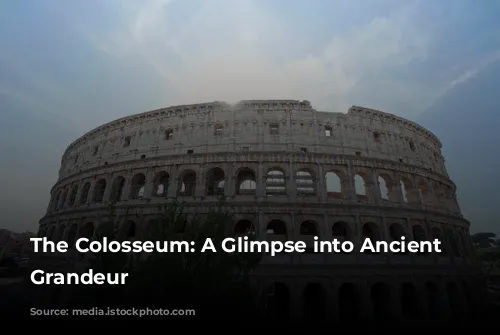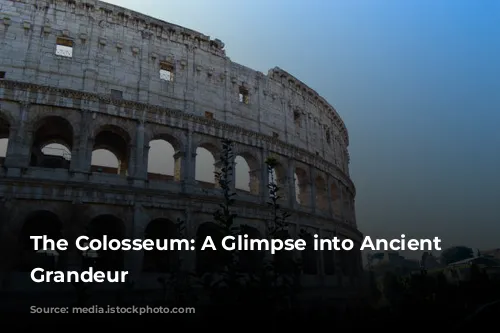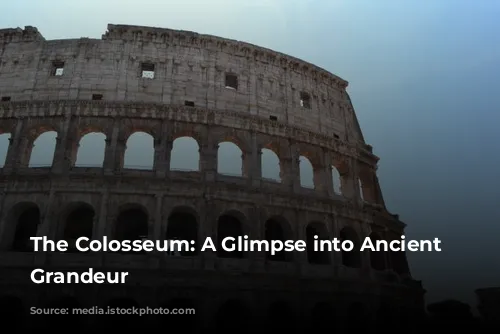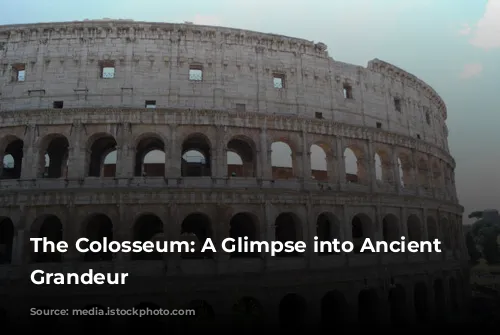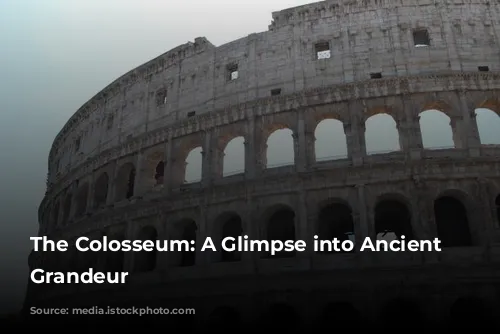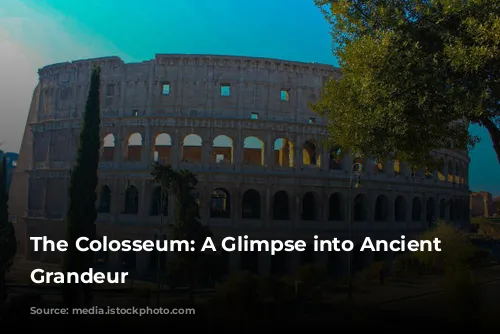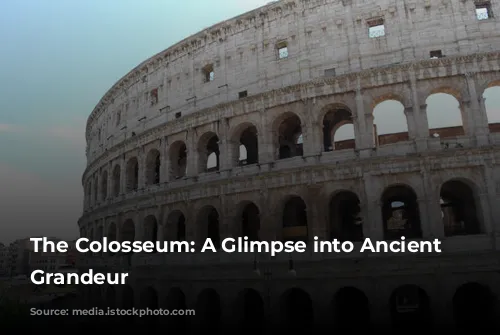The Colosseum, a name synonymous with Rome itself, stands as a towering testament to the empire’s power and spectacle. This massive amphitheater, originally known as the Flavian Amphitheater, was a monumental achievement in Roman engineering and architecture. Begun by Emperor Vespasian of the Flavia family, it was inaugurated by his son Titus in 80 AD.
A Grand Opening and a Mysterious Name
The Colosseum’s opening was a grand affair, lasting a whopping 100 days! The celebration featured thrilling gladiator fights, exotic animal hunts, and even elaborate nautical battles known as naumachias, where the arena floor was flooded. But why is it called the Colosseum? The name first appeared in a medieval prophecy by the Venerable Bede, who famously linked the Colosseum’s fate to Rome’s. Some believe the name originated from the colossal statue of Emperor Nero, which once stood nearby.
Architectural Marvels and a History of Transformation
The Colosseum’s sheer scale is breathtaking. Imagine this elliptical structure, once adorned with gleaming white travertine stone, boasting four floors and eighty arches on each of the first three levels. The sheer size of the structure is awe-inspiring, considering it was built in just a decade!
The Romans were masters of the arch, a structural marvel that allowed them to distribute weight effectively, as seen in their aqueducts. The Colosseum itself can be envisioned as a series of aqueducts stacked one on top of the other. Sadly, only a portion of the outer brick wall remains today. Over time, the Colosseum was plundered for materials, its marble, lead, and iron used to construct other famous Roman structures like St. Peter’s Basilica.
A Seat for Every Spectator
The Colosseum could hold a staggering 70,000 spectators, each finding their place in the carefully tiered seating arrangement. The lower seats were reserved for the elite, while the commoners occupied the higher tiers, segregated by gender. The Colosseum even boasted an ingenious roof system called the Velarium, a massive linen awning that could be manipulated by 100 sailors to protect the audience from the sun.
The Arena: Where History Unfolded
The Colosseum’s arena, once a stage for captivating performances, has disappeared, leaving behind the cellars where the spectacle was prepared. These cellars held the machinery used to create dramatic entrances, hoisting animals and gladiators into the arena through trapdoors. The arena’s floor was covered in sand, a reminder of the bloodshed that took place there.
The Shows: A Tapestry of Entertainment
The Colosseum’s events were both entertaining and symbolic, offering a glimpse into Roman life. The Venationes, morning spectacles, pitted exotic animals against each other or against human opponents. The Silvae, with their elaborate painted backdrops, brought the forest to life, showcasing the skill of Roman artists and set designers.
The Gladiators: Heroes and Warriors
The gladiators, the most popular performers, were often prisoners of war or those seeking fame and fortune. They fought in twelve different styles, each wielding unique weapons and armor. The gladiatorial duels were dramatic affairs, with the audience’s roar deciding the fate of the defeated. A raised arm signaled a plea for mercy, leaving the emperor to decide whether to spare the gladiator’s life or sentence him to death.
A Legacy of Blood and Entertainment
The Colosseum witnessed countless battles, hunts, and spectacles, fueled by the Romans’ thirst for entertainment. The smell of blood and burnt flesh, the echoes of roars and cheers, these were the hallmarks of the Colosseum’s glory days.
A Symbol of Transformation
The Colosseum has endured, a silent witness to the rise and fall of the Roman Empire. Its walls have sheltered various uses, from monastic communities to cemeteries. Today, it stands as a UNESCO World Heritage Site, a reminder of Rome’s ancient power and its enduring fascination.
A Ghost of Rome
For Charles Dickens, the Colosseum was a ghost of old Rome, a spectral presence that haunted the city’s modern streets. Today, it remains a powerful symbol of Rome’s history, drawing millions of visitors who marvel at its grandeur and contemplate the spectacle it once held.
